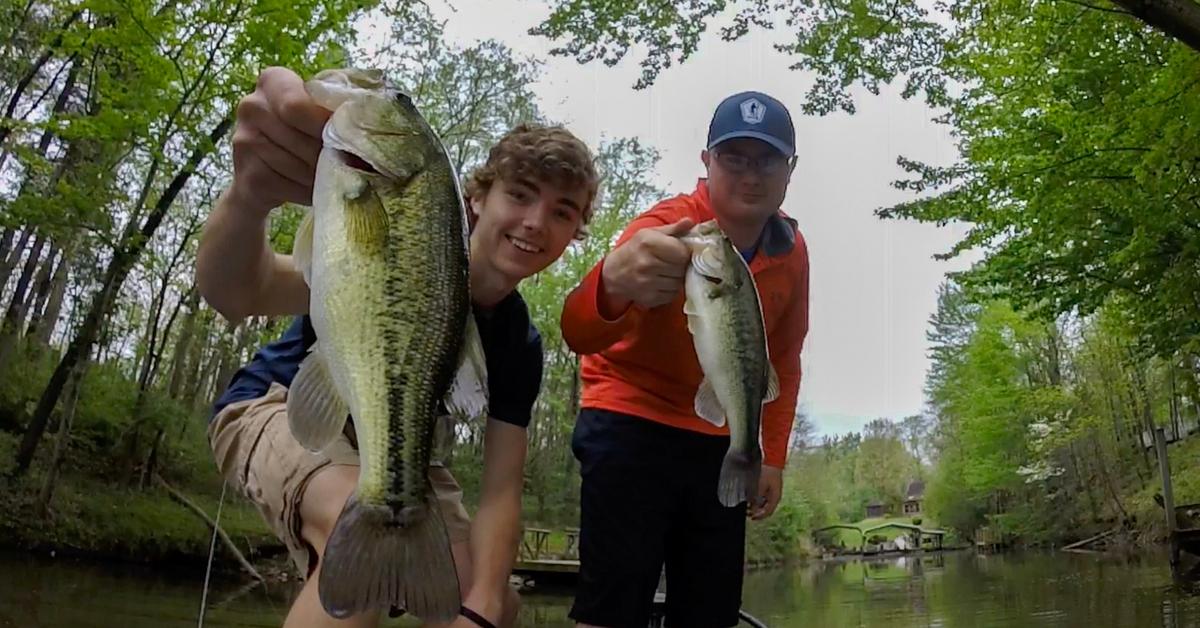River Bass Fishing: How To Catch Giant Bass In Your Local River
River bass fishing the ugly, chocolate-brown rivers that you thought were best suited for catfish and cane poles can actually be an attractive bass fishery in suburbia.If you have honed your bass fishing skills on lakes, you might need some retraining before fishing for bass on river systems.
Adapting To River Bass
A valuable lesson in adapting to river fishing is discerning the differences between a lake and river. The seasons play a key role in all fishing applications, but probably have more of an influence on the rivers than lakes. Bass fishing is usually good in the spring, winter and fall on most lakes, but the prime times for most rivers are summer and fall.Rivers usually offer the best fishing during falling water levels. When a river is on the rise, bass move to the shallows and spread out in newly flooded cover, which makes it difficult to find these moving fish. A falling river level makes it easier to locate bass because the fish congregate more along structure near the deepest water available.
River Bass Fishing Locations
It is easier to find bass on a river that it is on a big lake because the current and river level dictates where the fish locate. If you have trouble catching bass in the main river current, concentrate on backwater areas where the flow is reduced. A little bit of current makes bass bite best so avoid dead-water areas.When fishing backwaters, look for something different along the bank that will attract bass. Prime examples included sparse rocks lying along a mud bank, a water fall or a partially submerged drain pipe. Whenever you catch a bass from these spots, make yourself slow down and fish it thoroughly because those areas usually hold concentrations of bass.A current’s intensity often determines which areas of the river you should fish. During a strong flow, head for the backwaters, but when the current is weak try the main channel because shad will move into the river followed by schooling bass.
River Bass Fishing: Hitting The Main Channel
The type of cover to fish on the main river depends on the season. In the spring, target stumps and timber in the backwaters and search for clear water since bass spawn in the clearest water available. Water color plays less of a role in river fishing during the summer and fall. Cover preferences during these seasons change though as you should target vegetation in the summer and rocks and pilings in the fall.Whether fishing backwaters or the main river, keep your lures running less than 5 feet deep. When fishing backwaters, if your trolling motor isn’t digging the bottom you are fishing too deep. Even on the main river where the channel runs to depths of 40 feet, bass will usually suspend around pilings 1 to 2 feet deep.
Top Producers For River Bass Fishing
A top lure for river bass is a soft plastic crawfish either Texas-rigged on a worm hook or attached to a lightweight jig. Heavier jigs tend to fall to the bottom whereas a lightweight model or a light sinker on the Texas rig is swept by the current right in front of a bass’ nose. If you use a lightweight lure and keep it in front of the bass’ face, the longer you can keep it there the more chances you have of getting bit.A spinnerbait is another favorite lure for river bass. In the spring, select a 1/4-ounce spinnerbait with thumb-sized blades and then switch to larger models such as a 3/8-ounce version with number 5 blades in mid-summer and fall to match the size of the shad. Since you will be fishing mainly murky water, throw spinnerbaits with colored blades including orange and red during the spring, chartreuse in the summer and white in the fall. Other productive river lures are topwater baits, buzz baits, tube baits and crankbaits.
Figuring Out A River
Your lure presentation depends on how the current positions bass. The fish avoid fighting current all the time so bass are always going to hold behind cover. This positioning reduces a bass’ strike zone, which makes lure presentation even more critical.By nosing your boat into the current and throwing your lure upstream, you can sweep your bait around the cover with the flow and then bump it into rocks or wood. The lure bumping into the cover usually triggers a strike. Vary the speed of your retrieve and shake or pop your rod to make your lure appear wounded. You want your spinnerbait to look like an injured baitfish, which triggers bass into hitting it because their instinct is to kill injured fish whether the bass is feeding or not.You might have to alter your style to catch bass from major river systems, but once you grasp the basics of river fishing you will add a multitude of waters to your list of favorite bass locales.
Updated January 22nd, 2021 at 2:47 AM CT


